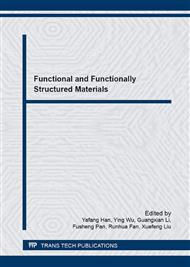p.472
p.477
p.482
p.489
p.494
p.498
p.505
p.519
p.527
DFTB Calculation of Si Atomic Chains’ Structures and Electronic Properties
Abstract:
In this paper, structures and electronic properties of atomic chains with 5 to 20 silicon atoms and different atomic distances (d = 1.652 ~ 2.752Å) were calculated by the tight-binding method based on density functional theory. The results showed that the majority of the silicon atomic chains were symmetrical structures. When the number of silicon atoms was small, the silicon atomic chains were linear, when the silicon atomic chains had seven or more silicon atoms zigzag structures appeared. With the increase of the distance between atoms, atomic chains were gathering. When the number of silicon atoms was between 10 and 20, the charges on the silicon atoms appeared as a symmetrical distribution. With the increase of the number of atoms, the energy of silicon atomic chains decreased gradually. As the distance between atoms and atomic number changed, HOMO (highest occupied molecular orbital electrons) -LUMO (lowest unoccupied molecular orbital electrons) energy gap changed as well.
Info:
Periodical:
Pages:
494-497
Citation:
Online since:
March 2016
Authors:
Price:
Сopyright:
© 2016 Trans Tech Publications Ltd. All Rights Reserved
Share:
Citation:


